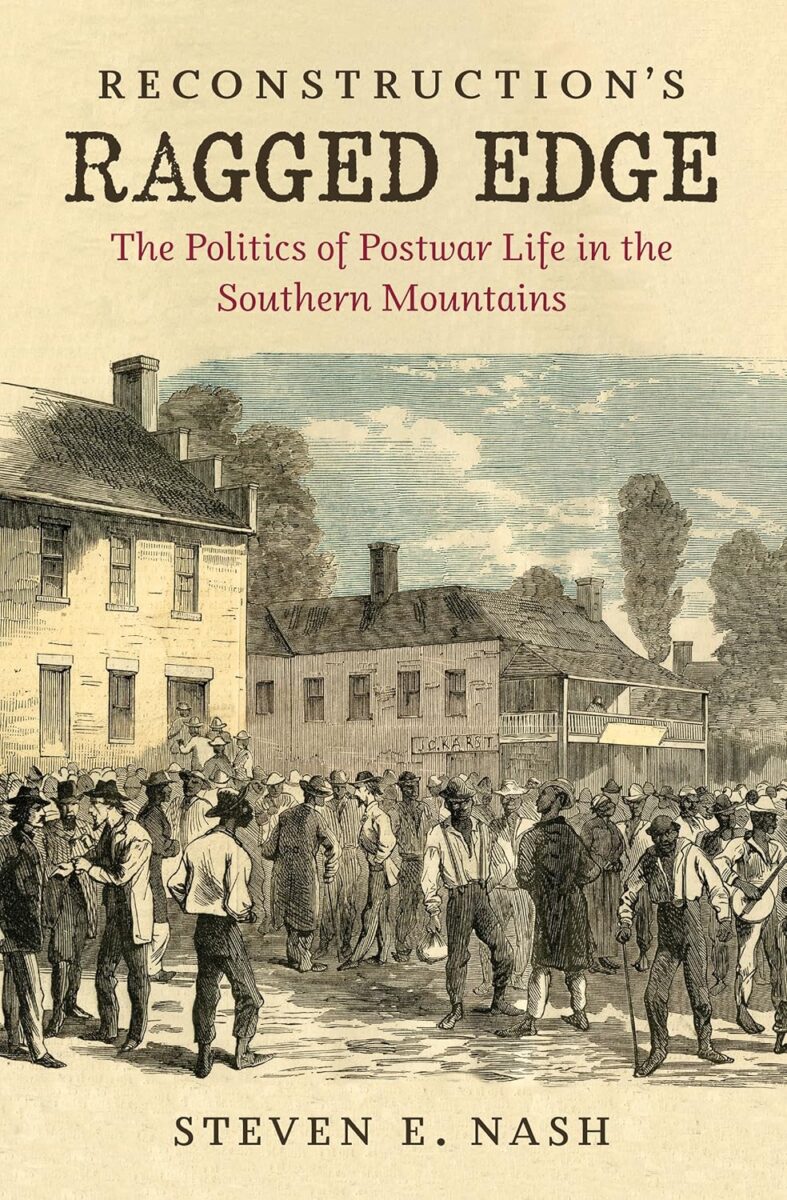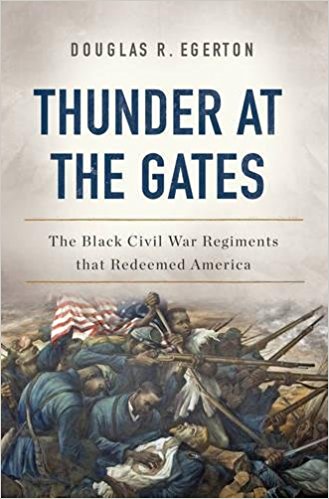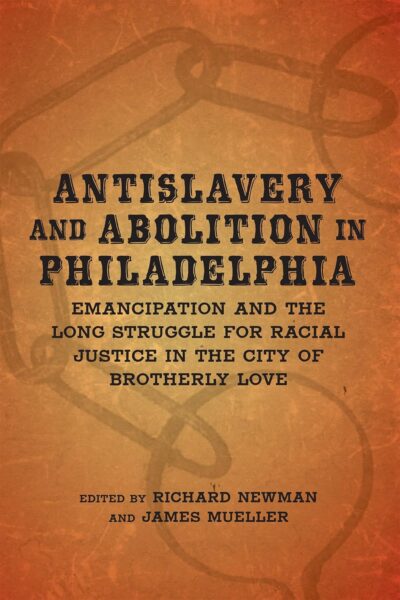In examining Reconstruction historiography, Appalachia is often overlooked. Reconstruction’s Ragged Edge: The Politics of Postwar Life in the Southern Mountains by Steven E. Nash helps to fill this gap by examining how politics and society shifted in western North Carolina. Appalachia, the author argues, is central to understanding North Carolina’s Reconstruction. Nash provides an overarching history of Reconstruction in western North Carolina, but the book speaks to a larger region. To understand why Republicans lost control of North Carolina, you must understand the western portion of the state.
Though about Reconstruction, this book actually has a lot to say about the Civil War. Chapter One, aptly titled “Setting the Stage,” does just that, identifying the prewar roots of the many social and political issues and relationships that would play a role during and after the war. The second chapter focuses on the impact of slavery’s demise in the region. From African American efforts to unite families to planters using violence to reassert control, the chapter delves into how the end of slavery shaped Reconstruction in Western North Carolina.
This book fits into a larger movement by historians to examine the lasting social impacts of the war. As Nash points out, “the centrality of wartime loyalties” to Reconstruction’s course cannot be underestimated (183). Nash argues race was not the only thing that motivated white voters in the mountains of North Carolina; indeed, he finds it was less important than other aspects of Reconstruction politics. In the mountains of North Carolina, “one’s loyalties shaped political coalitions to a greater extent than issues stemming from emancipation” (3).
The third chapter turns to political struggles between various factions in the three years after the war. Nash makes clear that a biracial alliance between white Unionists, anti-Confederates, and African Americans existed in the mountains despite the relatively small population of African Americans. It had the potential to continue beyond Reconstruction.
The role of wartime loyalty remains central as chapter four turns to the Republicans’ most powerful tool, the Freedmen’s Bureau. Nash explains that the ability of former Confederates turned conservatives to regain local control of government “led white Unionists to embrace the Republican Party and black political cooperation” (7). The Freedmen’s Bureau was the primary agent of Federal power in the mountains of North Carolina, and Republican victories in the 1868 state elections were only possible because of it. Nash truly shines in this chapter. Drawing connections between state level political fights that scholars will likely be familiar with and local fights over voter registration, education, and control of the courts that are often overlooked, Nash demonstrates how intertwined the local politics were with the state and national outcomes. Though African Americans represented a minority of the population of Western North Carolina, they were a key voter bloc that could swing elections in important counties. Republican and the Freedmen’s Bureau’s successes in the late 1860s are often overshadowed because of later reversals in the 1870s, but as Nash demonstrates, conservative resistance to the Bureau was also a testament to the organization’s past successes.
While the first four chapters focused on the period ending in 1868, the last two chapters extend the story up to 1880. The book turns in chapter five to the decline of the biracial Republican coalition, the rise of Klan violence, and subsequent collapse of Republicans’ rule. Again, issues of wartime loyalty took center stage during Reconstruction. For example, looking at the militia units raised by George Kirk to suppress nightriders, Nash finds many militia members’ personal and familial ties to wartime dissent often influenced their decision to support Republican state government against the Klan. Nash also concludes that Republicans, “needed outside power to support them in their local contests” (147).
The final chapter makes the intriguing argument that Democratic support for internal improvements, specifically railroads, was designed to “lure disillusioned Republicans” to the Democratic Party (8). Nash’s argument that “Industrial development trumped a commitment to social change and […] doomed reconstruction in the western counties” is convincingly argued (182). As important as race baiting was in the Piedmont and eastern North Carolina, in the mountains, Democrats won former Republicans over with promises of railroads and economic growth. This final chapter, which adds such nuance to our understanding of Reconstruction politics, is one of the highlights of the book.
While Nash’s Reconstruction’s Ragged Edge may seem a regional study, its implications are not. The book has numerous contributions that will interest historians of the Civil War era. Not only does the book tie the Civil War to Reconstruction by examining how, for many, “the war did not necessarily stop in 1865,” it also helps to explain why Reconstruction ended (181). Nash raises numerous questions for Reconstruction historians, even those less interested in the mountains. For example, Nash makes clear we need a more nuanced picture about how conservatives in other regions of the South gained the support of Unionists and lured other white wartime dissenters away from the Republican Party. In Appalachia, Nash argues, it was a combination of factors—including violence, the failure of the Federal government to keep intervening, economic development, and promises of railroads—that led to the breaking up of a biracial alliance. In turn, of course, that helped to bring about the end of Reconstruction in North Carolina.
This book will be enjoyed by scholars of Appalachia, Reconstruction, the Civil War, and the American South more generally. Indeed, anyone who enjoys good historical writing will not be disappointed by Reconstruction’s Ragged Edge. With clear prose and a compelling narrative, this book is an enjoyable and worthwhile read.
Adam H. Domby is assistant professor of history at the College of Charleston. He won the 2018 John T. Hubbell Prize for his article, “Captives of Memory: The Contested Legacy of Race at Andersonville National Historic Site.”





